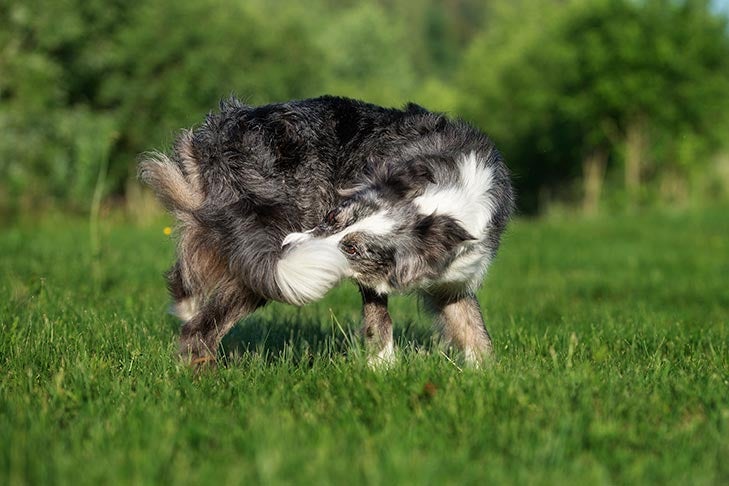
Does your dog send himself into a never-ending tailspin several times a day? While it can seem cute and playful at first, this dizzying cycle could stem from a bigger issue.
Why do dogs chase their tail?
Dr. Steve Weinberg, DVM, is the founder of 911 Vets, an in-home pet medical service in California that provides on-call animal emergency services 24 hours a day. With three decades of veterinary experience, Weinberg has seen a wide variety of animal behaviors and illnesses — including many dogs with a seemingly endless desire to chase their tail. “Occasional chasing could be a nervous habit or part of play,” he explains. “Obsessive chasing could be due to a brain abnormality akin to seizure-like activity. Other reasons could be a painful area where a tail was docked, an infection, or even cancer.”

Talk to your veterinarian if your dog is exhibiting this behavior. Weinberg adds that tail chasing can lead to “self-destructive behavior, as the signs worsen over time.” Interestingly, he says that Bull Terriers have the highest prevalence of tail chasing. “I’ve seen several of these dogs that have actually chewed their tails terribly, requiring surgery.”
Weinberg often hears people link tail chasing to autism in dogs. “It is a common myth that vaccinations cause autism in animals,” he says. “People believe that tail chasing is an autistic behavior, therefore they make the connection that vaccinations cause tail chasing, which is not true.”
If your dog is obsessively chasing his tail, your vet can check to see if there is an infection, a spinal abnormality, or other medical issue causing the action. She can also prescribe medication, if necessary. “Antidepressants have been used, as well as anti-seizure medication, usually accompanied by distraction techniques as ways to stop tail chasing,” Weinberg says. “A board-certified veterinary behaviorist should be consulted.”

